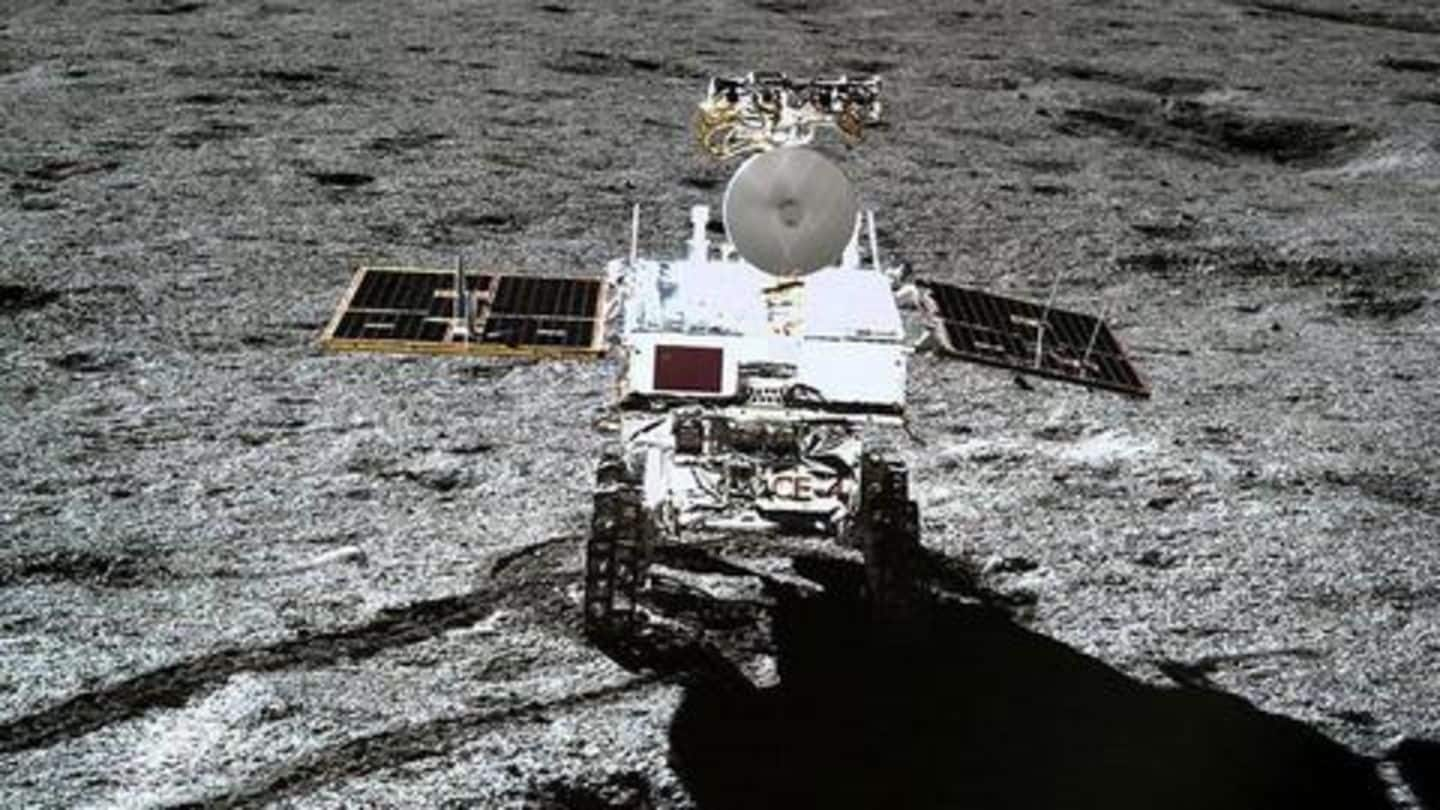
China makes history again; sprouts seeds on the moon
What's the story
After making a historic first-ever landing on the dark side of the moon, China has made space exploration history yet again. Seeds taken to the moon by Beijing's Chang'e-4 probe have now sprouted, marking the first time any biological matter has grown on the moon. Notably, the achievement is a significant step towards long-term space exploration. Here are the details.
Mini biosphere
Chang'e-4 contained a mini biosphere for growing biological matter
Chang'e-4, which made a soft landing on the moon's far side on January 3, had carried a sealed container with biological matter. The container - an artificial, self-sustaining mini biosphere - carried soil from Earth with cotton seeds, potato seeds, yeast, and fruit fly eggs. Then, on Tuesday, Chinese state media, in a historical moment, announced that the cotton seeds had sprouted.
Details
How the mini biosphere works
For those interested in the details, the 'mini biosphere' is a 7-inch bucket-like tin that contains air, water and soil. A tube inside the tin directs natural light from the moon for photosynthesis, and scientists hope that oxygen emitted from growing plants inside the mini biosphere will create a tiny ecosystem. China also hopes to live broadcast growth of organisms on the moon in some time.
Significance
Why the achievement is an extremely important step
The development is particularly significant for long-term space exploration insofar that it demonstrates that growing biological matter in a controlled environment is actually possible on the moon. Moreover, China's achievement takes on further significance considering the growing interest in the moon as a staging post and a forward base for future flights to Mars.
Other objectives
The Chang'e-4, meanwhile, is continuing to survey the moon
Meanwhile, the Chang'e-4 is continuing on its other major scientific mission of surveying the lunar terrain and gathering data on the moon's landform and mineral composition. A particular area of focus is the Aitken basin, which is one of the largest craters in the solar system. The probe has also beamed back the 170 odd photos it has taken of the lunar surface.
Space program
China is racing forward with its space program
These two historic feats by China mark major steps in its mission to be at par with the US and Russia and become a major space power by 2030. Now, China plans to commence the construction of its large modular space station next year as the third-phase of its Tiangong space station program. Earlier, China had launched the Tiangong-1 and Tiangong-2 space stations as preliminary steps.
Tensions
That said, there's growing tension between the US and China
Apart from civilian space endeavors, China has also tested anti-satellite missiles. Understandably, despite Beijing's insistence that its intentions are peaceful, Washington remains unconvinced. While the US Congress has already banned NASA from two-way cooperation with the CNSA, US President Trump has sought to create a new 'Space Force' by 2020 as the sixth branch of the military to counter China's advances.